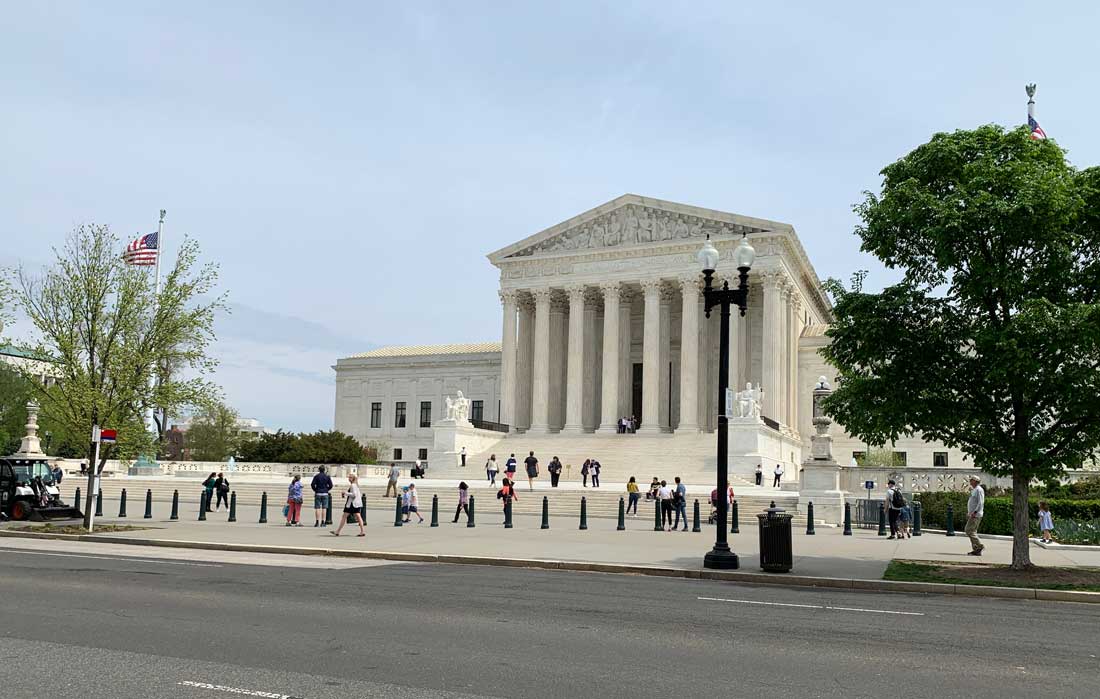
19 Feb Oracle vs Google: Guild Joins Amicus Brief
The Graphic Artists Guild has joined nine other creators’ rights organizations on an amicus brief submitted in Google LLC vs Oracle America, Inc. The case, which has been characterized as “the copyright case of the century,” is due to be heard by the Supreme Court. At issue is whether Java APIs are copyrightable, and whether Google’s use of the code in question falls under fair use. However the Supreme Court decides, the ruling will have an effect on software development.
The case is a development in a decade-long dispute between Oracle and Google. When Google was originally developing its Android operating system for mobile phones, it wanted to use the Java programming language. Java was extremely popular with developers, since the Java platform permitted coders to write a Java program on one operating system, and have that program run on a different operating system. Google specifically needed the Java API (Application Programming Interface, or software consisting of prewritten protocols or functions that permits two applications to communicate). The Java API consisted of a library of prewritten functions organized into bundles of declaring code that provided instructions for accessing libraries of implementing code.
Google entered into negotiations to license the code it needed from Java’s owner, Sun Microsystems, but failed to reach an agreement. When no agreement was reached, Google integrated Java’s declaring code into the Android system, and wrote its own implementing code. This permitted developers to build their own Android applications using the familiar Java declarations. In 2010, Sun Microsystems was bought by Oracle, which continued to develop Java and pursue licensing opportunities. Oracle also sued Google for copyright infringement in District Court.
The lawsuit set off a lengthy sequence of court hearings and appeals. The original lawsuit was dismissed when the court found that APIs are not copyrightable. Oracle appealed that decision, and in 2014, the US Court of Appeals for the Federal Circuit found that APIs are copyrightable. This led to a second court case in 2016 to determine if Google’s use of the API fell under “fair use.” Again Oracle lost the case, again Oracle appealed, and again The US Court of Appeals ruled in favor of Oracle. (The Graphic Artists Guild signed on to an amicus brief filed by DMLA in this case.) In 2019, Google petitioned the Supreme Court, challenging the two Appeals Court rulings.
The implications of the Case for Creators
The two questions the Supreme Court will be considering are whether APIs are copyrightable, and whether Google’s use of the Java API falls under fair use. That latter question is the one of significance for creators. The issue is that “fair use” is increasingly used as an argument to justify the use of copyrighted work without permission.
In order to judge whether the use of a copyrighted work is “fair use”, the court must consider four factors: the purpose and character of the use of the copyrighted work; the nature of the copyrighted work; the amount and substantiality of the portion taken, and the effect of the use upon the potential market. When considering the “purpose and character” of the use, the court will consider if the use is “transformative”: was something new added to the work, with a further purpose or a different character. In its webpage on fair use, Copyright Office points out that transformative use cannot substitute for original use of the work.
Google contends that its use of the Java declaring code was transformative, since its use was for mobile devices instead of laptop and desktop computers. However, amicus briefs written in support of Oracle point out that Google’s use of the declaring code does not meet the standard for transformative use. Google didn’t change the “expressive content or message” of the code, but merely changed the format from a desktop to a mobile environment.
The Creators Rights Organizations amicus brief addresses the issue of transformative use. It points out that fair use has been applied unevenly in different court cases. The brief also points out that several court decisions have improperly extended the meaning of “transformative use” beyond the accepted construction of “new expression, meaning, or purpose:”
Specifically, courts have extended the meaning of “transformative use” far beyond the Court’s intended construction of a “new expression, meaning, or purpose,” and found transformative use where there is merely a new audience, technology, or platform— areas that should be reserved for the copyright owner.
The brief cautions, though, that all four fair use factors should be considered, in particular the impact the new use would have on the value of the work if that use were unrestricted. It points out the creators have been devastated by overly expansive applications of fair use, particularly on works which ordinarily would be licensed.
The case is expected to be heard by the Supreme Court on March 24, 2020. Several amicus briefs have been filed in support of both parties, including IBM, Microsoft, CCIA, EFF, and the Internet Association on behalf of Google, and journalism and media law professors, the Copyright Alliance, IP lawyers, and the United States (Copyright Office, Commerce Department, and Department of Justice) on behalf of Oracle.
